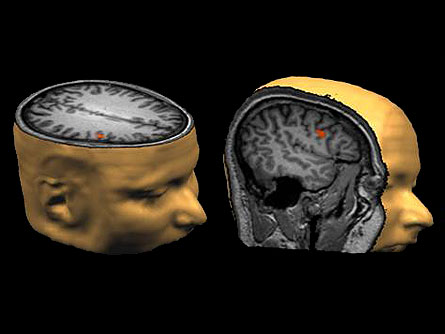In the brain, justice is served from many parts
Imaging study reveals variation in brain activity depending on the severity of punishment a person decides
- More than 2 years ago
Making decisions about crime and punishment is, it turns out, as complicated as a legal brief. For the first time, scientists have peered into the brains of people who are deciding whether a crime deserves punishment and how severe the penalty should be.

Those decisions involve parts of the brain associated with rational thought, but emotion-processing regions weigh in too, a team of law and neuroscience researchers from Vanderbilt University in Nashville, Tenn., show in a new study in the Dec. 11 Neuron. The findings suggest that brain areas active in deciding a harsh punishment for a crime deliberately committed are different than those active when giving the accused some benefit of the doubt.
“We’ve identified regions that are jointly involved, but separately deployed to make a legal decision,” says Owen Jones, a professor of law and biology at Vanderbilt who led the study with neuroscientist René Marois.
“Our judicial system based on third-party punishment is usually seen as cold and detached as opposed to … punishment by the victim of a crime,” Marois says. The new study shows that emotions play a part in impartial judgment too.
Scientists have used functional MRI, or fMRI, before to scan the brains of people who are trying to decide whether to retaliate against someone who has cheated them in an economic game. But the new study is the first to examine which parts of the brain are active when an impartial third party makes decisions about guilt and punishment.
The work “is really groundbreaking,” says Joshua Greene, a psychologist and neuroscientist at Harvard University. “It’s a penetrating imaging study of legal decision making.”
Jones, Marois and their colleagues recruited volunteers who had not been victims of a crime or who were not close to crime victims. The researchers placed the volunteers in an fMRI scanner and measured brain activity while volunteers read a series of scenarios and decided whether the protagonist, in all cases a man named John, deserved to be punished for what he did and, if so, how severely. Harm to the victims of John’s hypothetical crimes ranged from petty theft to rape and murder. In some of the scenarios John deliberately carried out the crimes, while other scenes showed mitigating circumstances, such as mental illness, accidents or duress that could be perceived as diminishing John’s responsibility for the crime. The volunteers also read scenarios in which no crime was committed.
Activity in a part of the brain called the right dorsolateral prefrontal cortex increased when volunteers decided John deserved punishment. The activity was also higher in that part of the brain when volunteers read scenarios in which John was responsible for the crime than when they read of mitigating circumstances reducing his responsibility. The right dorsolateral prefrontal cortex is the same part of the brain that becomes active in the economic game, when people decide to reject an unfair economic deal as a way to punish a partner. This brain area is thought to be involved in cognitive and impulse control.
Another part of the brain called the anterior intraparietal sulcus also became more active when assigning responsibility, while the temporo-parietal junction, a part of the brain linked to taking another person’s perspective, was more active for the scenarios where John’s responsibility was less.
But the amount of activity in areas involved in determining responsibility and whether to punish did not correlate to severity of punishment. Instead, harsher penalties were associated with increased activity in the amygdala and other parts of the brain involved in processing emotion. The degree of punishment matched the level of activity in the amygdala.
That doesn’t mean people make punishment decisions based on emotion, Jones says. “The causal arrow could run in the other direction — having decided to punish someone severely could cause an emotional response.”
Demands for impartiality in third-party judgment may cause the dorsolateral prefrontal cortex to override more basic instincts to throw the book at someone who has committed a crime, says Johannes Haushofer, a neuroscientist at the University of Zurich in Switzerland. “When you’re in that scenario you might think, ‘I’m the judge. I’d better be impartial,’ so you have to suppress the knee-jerk reaction to punish blindly.”
What the results show is that, “Our sense of propriety when it comes to punishment is not the result of a single neural system,” Greene says.
Identifying the brain regions involved in legal decision making is a first step in learning how such decisions are made. The new study doesn’t address the details of thought processes that go into making a complex legal decision, Jones says.
“There’s a big distinction between brain scanning and mind reading,” he says.
Further research will tease out how the different areas of the brain involved in legal decision making communicate with each other and whether judges and other legal professionals make decisions of guilt and punishment in the same way other people do.







